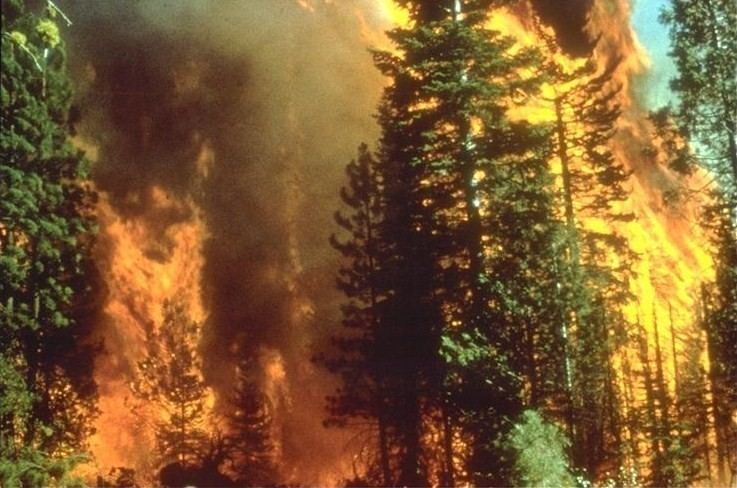 | ||
California has dry, windy, and often hot weather conditions from late spring through autumn that can produce moderate to devastating wildfires. At times, these wildfires are fanned or made worse from strong, dry winds, known as Diablo winds in the northern part of the state and Santa Ana Winds to the south. Wildfires in California are growing more dangerous and costly. U.S. taxpayers are paying about $3 billion a year to fight wildfires, triple what it cost in the 1990s, and big fires can lead to billions of dollars in property losses.
Contents
The following is a list of major wildfires of various sizes that have occurred in California.
Largest Fires
Since 1932, when accurate records started to be kept, these are the 20 largest wildfires in California according to CAL FIRE.
Note: means fire is currently burning. Total size and position in list subject to change.
Pre-2000
Post 2000
Starting in 2001, the National Interagency Fire Center began keeping more accurate records about total fire acreage burned in each state.
Yearly Stats
A 2015 study indicates that the increase in fire risk in California is attributable to human-induced climate change.
Areas of repeated ignition
In some parts of California, fires can sometimes recur in areas that have had past histories of fires. Examples of this are in Oakland, which fires of various size and ignition occurred in 1923, 1931, 1933, 1937, 1946, 1955, 1960, 1961, 1968, 1970, 1980, 1990, 1991, 1995, 2002, and 2008. Other examples being Orange County, Riverside County, San Bernardino County, and Los Angeles County. In the case of Orange and San Bernardino, these two counties share a county border that runs north to south through the Chino Hills State Park, with the parks landscape ranging from large green coastal sage scrub, grassland, and woodland, to areas of brown sparsely dense vegetation made drier by droughts or hot summers. The valley's grass and barren land can become easily susceptible to dry spells and drought, therefore making it a prime spot for brush fires and conflagration, which many have occurred since 1914. Hills and canyons that have seen brush or wildfires in one or similar locations have occurred in 1914, the 1920s, 1930s, 1940s, 1950s, 1960s, 1970s, 1980s, 1990s, 2000s, and into today.
On occasion, freak lightning strikes from thunderstorms may also inadvertently spark wildfires in areas that have seen past ignition. Examples of this are the 1999 Megram Fire, the Summer 2008 California wildfires, among others.
